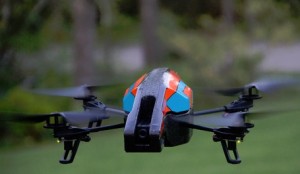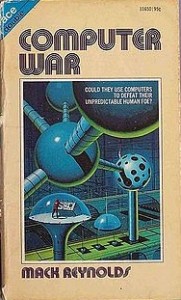Monday Morning: Falling
This morning feels like a fall from great height — disorienting yet certain to end only one way.
Should have rolled over and gone back to sleep instead of mixing it up about politics during the wee hours. ~ yawn ~
The embedded video actually launches a playlist of Afro Celt Sound System. They’re a favorite mood lifter, a perfect example of diverse music styles meeting to create something even more special. Cuts I’ve worn out besides When You’re Falling (with Peter Gabriel) are Lagan, Life Begin Again (both with Robert Plant), and North — yes, I think my favorite album is Volume 3 – Further in Time.
Let’s fall forward.
Oracle v. Google: The most important technology case not about privacy and security
Yet another reminder/disclosure before I start on this case: I own $GOOG, $GOOGL, and $AAPL. I do not own $ORCL or $MSFT, nor did I ever own Sun before it was acquired.
That said, Oracle v. Google is about the gift economy, the march of time and its effect on technology companies, and patent/intellectual property trolling as a business model. The gift economy I’ve followed for years; I was hired to provide competitive intelligence on open source software because the company seeking my services felt it was a threat to their business. And it was, it very much was, though the threat changed over the last decade from free open source software (FOSS) to free software as a service (SaaS) provided with cloud storage.
In a nutshell, Oracle is suing Google for $9 billion — the amount it feels it is due as the heir to Java, acquired when it bought the former Sun Microsystems in 2010. You’ll recall that Sun Micro was once a moderately competitive producer of servers and the creator of open source operating system OpenSolaris (based on Solaris Unix) as well as Java.
Java is a software language used as an alternative to C and C++. Its creators at Sun wanted “Write Once, Run Anywhere” capability so that software written in Java could run on any hardware platform. Contrast this to Microsoft software which runs on Windows-compatible PCs only. Sun did not sell Java licenses but instead sold developers’ kits to encourage the propagation of both the language and its Java-friendly hardware and Solaris Unix operating system. Java was a loss leader offering — like the dozen eggs for free if your total grocery order is $50 or more. This is the gift economy at work.
Java’s creation was initially a response to the lock-in of the desktop PC environment. However, IBM began using Java, allowing the same language to be used on everything from its mainframes to IBM-supported handheld devices.
Handheld devices now include smartphones and tablets running the Android operating system, a variant of Linux now owned by Google after its acquisition of Android, Inc. in 2005. Android’s popularity ate away at cellphone market share running Symbian, Nokia OS, and Windows-based mobile OS. Approximately 80% of the world’s smartphones now run on Android and with it Java application programming interfaces (Java APIs). It’s this installed user base from which Oracle insists it deserves a cut of the revenues.
Oracle is a software company, though unless you are in a larger enterprise, you’ve probably not used their products. Initially, a relational database management system company, over time Oracle has purchased a number of middleware businesses which rely on databases. Like PeopleSoft, a human resource management software — human resource information in a database, manipulated and managed by a middleware application above it. It has also acquired software and businesses with which its products once competed. Innobase, an open-source relational database management system (RDBMS) developer, was acquired in 2005; its application was based on MySQL, another open-source RDBMS.
MySQL’s parent company MySQL AB was itself purchased by Sun in 2008, and acquired by Oracle with Sun in 2010. MySQL remains open source and underpins many commonly used applications used across the internet, though Oracle is now its owner/developer.
You can see the ownership chain gets incredibly messy over time. But it’s also easy to see that Oracle is predatory; its business model relies on consuming other businesses to ensure the survival of its underlying database software, not merely to flesh out its offerings. It has acquired software to build an enterprise stack, or it buys nascent threats to its database software and closes them off in a way to ensure no leak of profit-making opportunities (ex: killing OpenSolaris, the FOSS version of Sun’s Solaris operating system). It also buys businesses and applications used to monitor intellectual property and competitive intelligence.
Not a surprise, really, when one considers the founders — Larry Ellison, Bob Miner and Ed Oates — all once worked on a CIA project code-named Oracle.
A test of the gift economy and the open source movement are at the heart of this case. FOSS relies on it, and now the internet does, too. Anyone connecting to the internet is touched by software and hardware consisting of or shaped by FOSS. Many believe the roots of the open source movement are in software, but the underlying premise goes even further back, to the late 1700s and the first freedom of information law (Sweden’s Freedom of the Press Act, c. 1766). Based on freedom of information, some contemporary governments demand FOSS as a means to ensure citizens have access to information without regard to proprietary business models.
Read any of the links above and your head will spin with the Byzantine convolutions of the software industry over the last two decades. Add the snark-laden quirks of geekdom shaping the decision-making process — quirks which are inside baseball and define one’s belonging to the industry.
Top it off with the inexorable co-development and emergence of the gift economy, and it’s utterly beyond the comprehension of the average Joe or Josephine on the street. Unfortunately, Joe and Josephine are seated as jurors, directed by an equally clueless judge appointed by a neoliberal president (who likewise cannot grok anything created and given to benefit all without some immediate upfront cost benefit in an offshore account). The concepts behind APIs are particularly hard for the judge and jury to understand, exacerbated by testimony from people who did not rise to the top of their industry because of their facility with spoken English.
Read Sarah Jeong’s piece in Motherboard about this case. Read others, like the overview at Ars Technica (read the enlightening comments, too), but keep in mind that everyone who has a stake in the success of technology also has an agenda. Sometimes it’s as simple as their stock portfolio or the type of phone they hold in their hand.
Sometimes their agenda is more complex and based on the concepts of free open-source software and the gift economy. What is open-source if it can be bought and retroactively used as a profit center long after the horses have been freed from the barn? What did the progenitors and decades of collaborators intend Java to be: a profit center in itself for a company they couldn’t see coming more than a decade later, or a means by which users/owners could freely choose more than a single software or hardware company to accomplish their tasks?
And will this case discourage and suppress the explosion of technology developed using a variety of open source licenses?
Phew, this was more than I expected to write about this. Swamped my usual morning roundup, which I’ll save for tomorrow morning.
One more thing: after reading the above about the legal war between the Titans of Technology, you might find this speculative mythological fiction rather entertaining. Where do these Titans fit in this mythology?

![[Graphic: Google Glass by Wilbert Baan via Flickr]](http://www.emptywheel.net/wp-content/uploads/2014/06/GoogleGlass_WilberBaan-Flickr.jpg)

